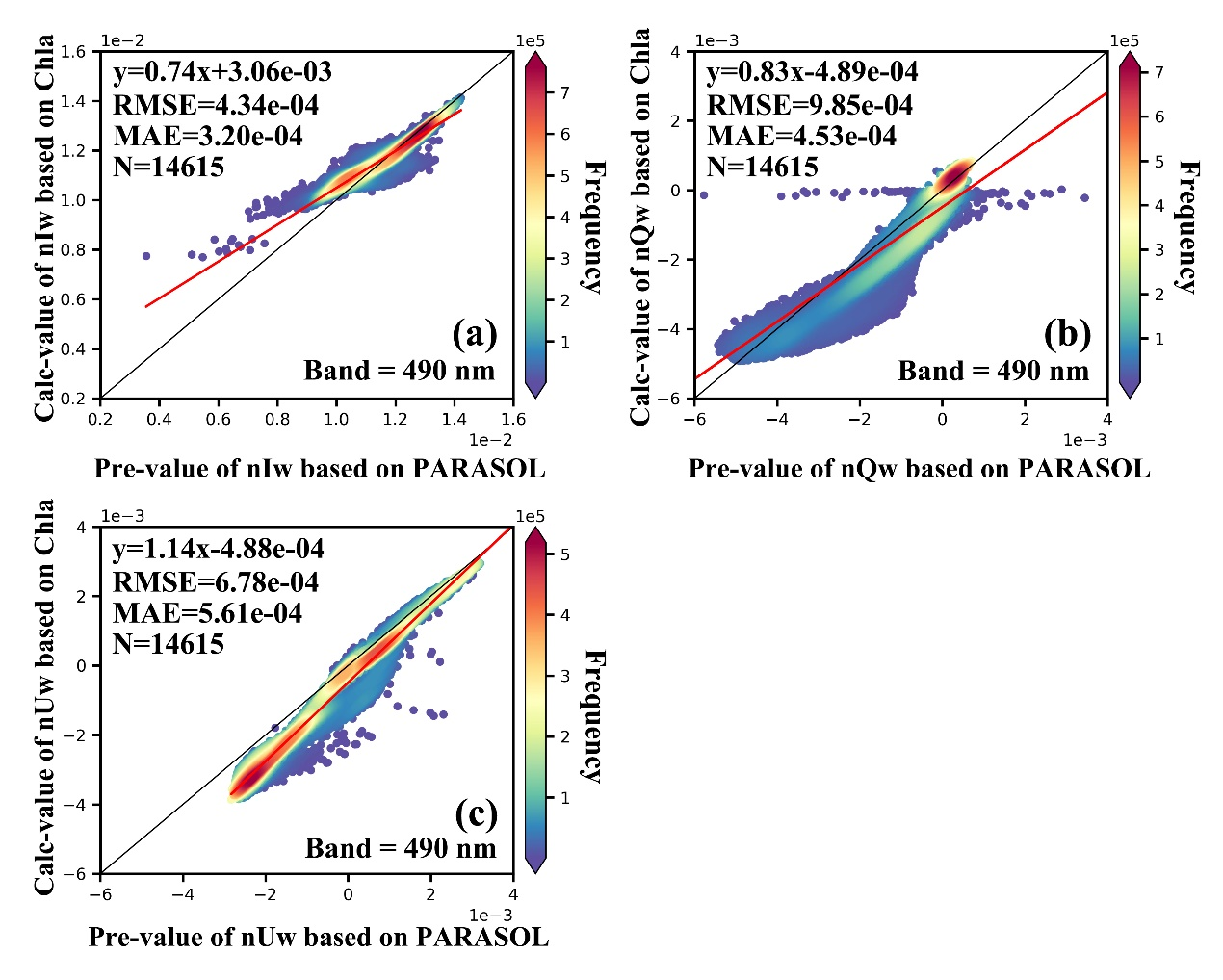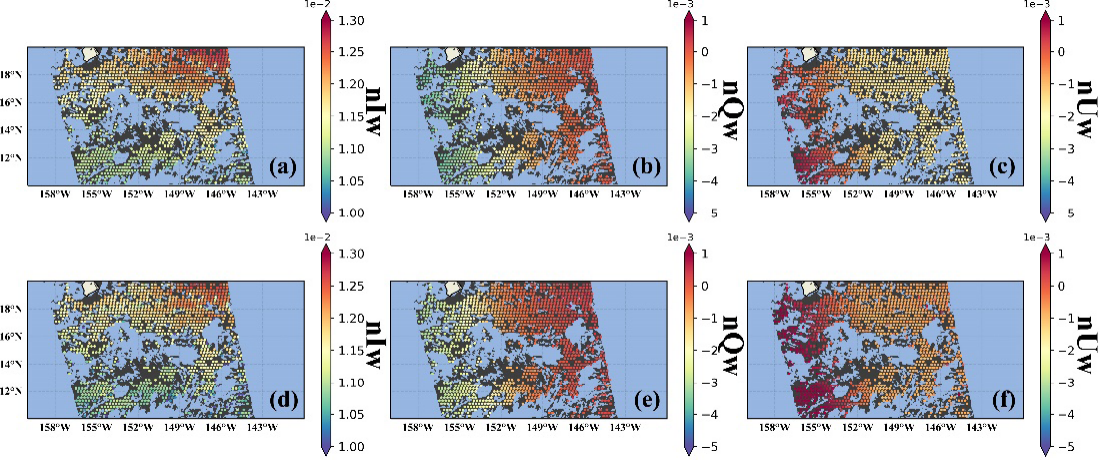Recently, the team of researcher HE Xianqiang and his collaborators in our laboratory published a research paper titled "Satellite retrieval of the linear polarization components of the water-leaving radiance in open oceans" in Optics Express, a well-known journal in the field of optics. The first author of the paper is PAN Tianfeng, a doctoral student jointly trained by our laboratory and Zhejiang University. The corresponding author is researcher HE Xianqiang of our laboratory. The collaborators include researcher BAI Yan, associate researcher LI Teng, senior engineer GONG Fang and researcher WANG Difeng of our laboratory.
Ocean color remote sensing uses optical sensors to observe the upward spectral radiation signal at the top of the atmosphere. After atmospheric correction, the water-leaving radiation information is obtained, and then the concentration or component information of different substances in the water is inverted. Traditional ocean color satellites only detect radiation intensity signals (the first element in the radiation Stokes vector [I, Q, U, V]). With the development of satellite sensor technology, ocean color satellite detection is developing from radiation intensity to Stokes vector detection. For example, NASA has planned to launch the PACE satellite in recent years, which is expected to detect water-leaving radiation vector signals. Due to the complex radiation transfer process of the ocean-atmosphere coupled medium system and the weak water-leaving radiation polarization information (large interference from the atmosphere and water surface), there is currently no atmospheric correction algorithm in the world that can directly extract the water-leaving radiation polarization signal.
To address this problem, this paper proposes a polarization atmospheric correction algorithm (PACNIR) based on near-infrared band extrapolations. This algorithm is based on the "Black Ocean" assumption in the near-infrared band and our previously constructed polarized water-leaving radiation atmospheric diffuse transmittance lookup table (Pan, He*, et al., 2022). Through vector radiation transfer calculation and parallel non-linear optimization algorithm, the Stokes vector (I, Q, U) of the water-leaving radiation, aerosol optical depth, and aerosol mode parameters of the target sea area are obtained by inversion (Figure 1).
This algorithm is the first to directly extract the polarization information of ionizing radiation from multi-angle polarization satellite observation data, and can provide algorithm support for the processing and application of polarized ocean color satellite observation data.

Figure 1 Polarization atmospheric correction algorithm (PACNIR) flow chart
Figure 2 Spatial comparison of the PACNIR algorithm inversion of water-leaving radiation vector (normalized nIw, nQw, nUw) results and the radiative transfer simulation results (chlorophyll concentration product based on GlobColour as input). (a)-(c) are the radiative transfer simulation results, (d)-(f) are the PACNIR algorithm inversion results.

Figure 3 Scatter comparison of the results of the PACNIR algorithm inversion of the water-leaving radiation vector (normalized nIw, nQw, nUw) and the radiative transfer simulation results (based on the chlorophyll concentration product of GlobColour as input). (a) nIw; (b) nQw; (c) nUw.
Citation: T. Pan, X. He *, Y. Bai, T. Li, F. Gong, and D. Wang, "Satellite retrieval of the linear polarization components of the water-leaving radiance in open oceans," Opt. Express 31, 15917-15939 (2023)


